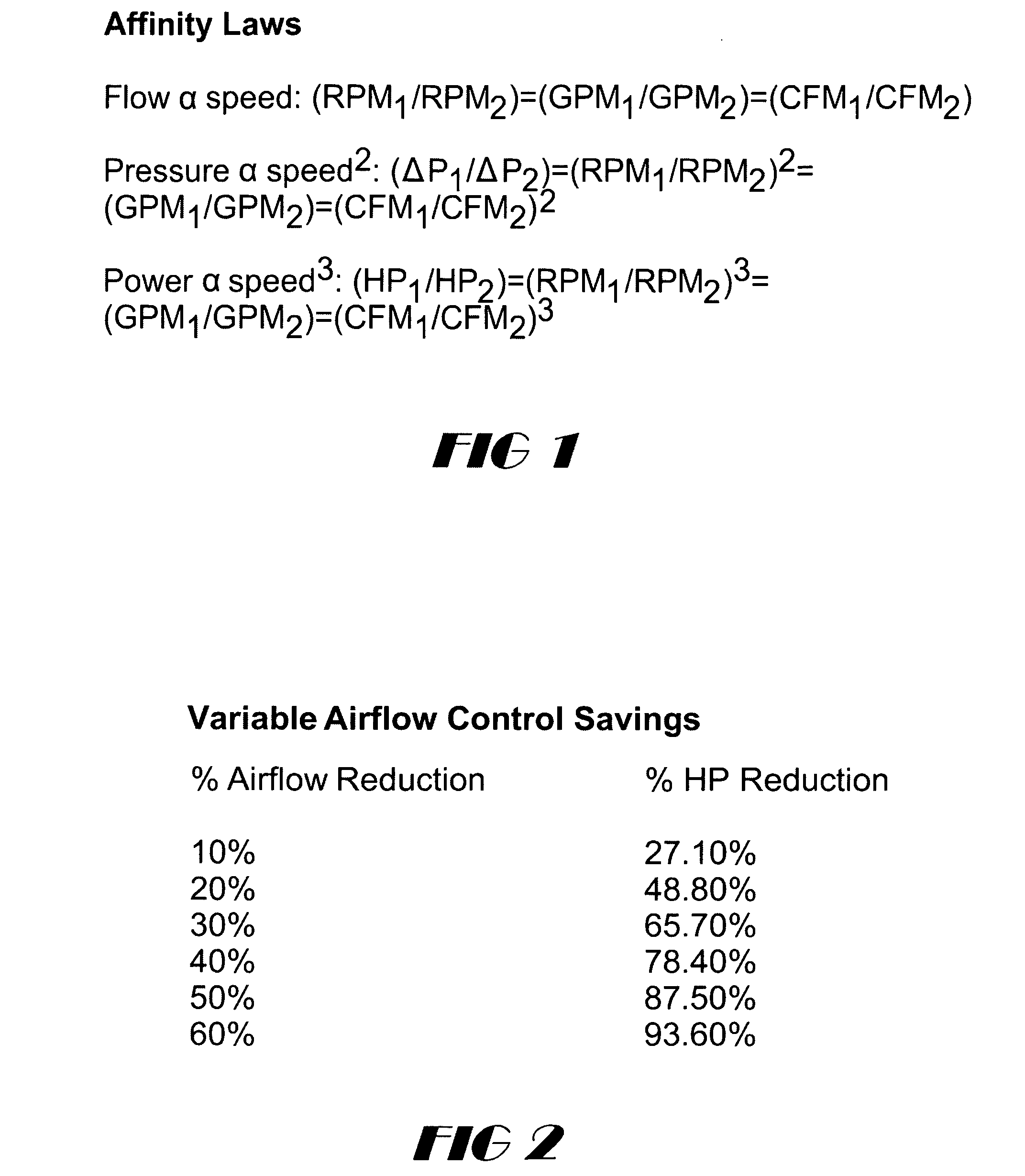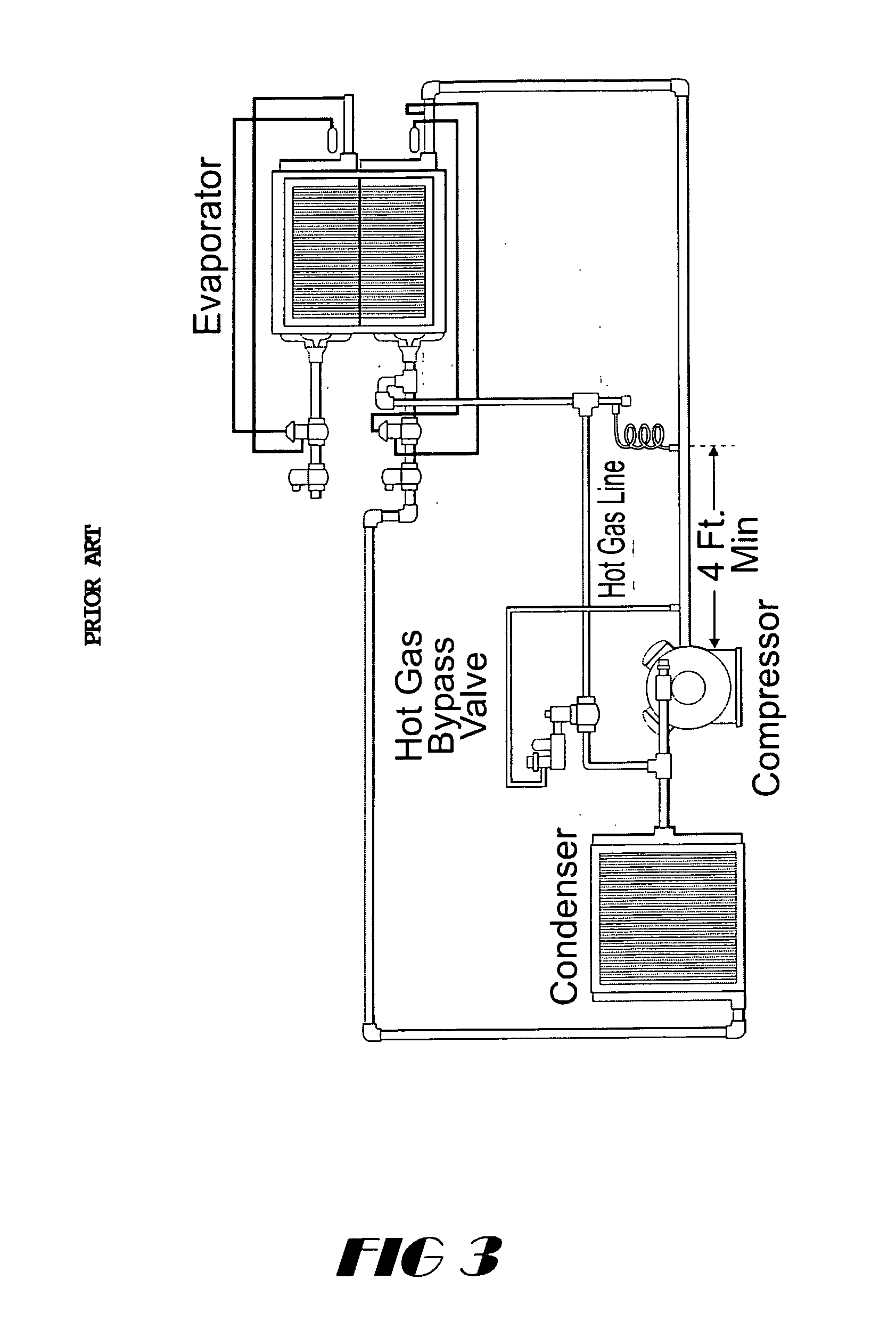Method and apparatus for control of cooling system air quality and energy consumption
a technology for cooling systems and air quality, applied in the direction of domestic cooling apparatus, ventilation systems, heating types, etc., can solve the problems of limited sophistication in energy saving features, no retrofit exists for literally millions of existing air conditioning units, and the operating cost (energy use) of the system has not been a significant consideration. , to achieve the effect of reducing energy consumption
- Summary
- Abstract
- Description
- Claims
- Application Information
AI Technical Summary
Benefits of technology
Problems solved by technology
Method used
Image
Examples
first embodiment
[0037]In the present invention for use with face split coils, automatic control dampers are added to prevent air bypass through the de-energized coil face at partial cooling loads. The damper is only closed during partial cooling loads in order to keep the air pressure drop through the cooling coil to a minimum. This minimization of the air pressure drop further reduces the fan energy usage. The fan speed is indexed to proportionally match the face area of the energized coil, so the active coil face velocity is identical to the coil face velocity at maximum load. As a result, all the heat transfer characteristics of the active cooling coil are essentially unchanged. These characteristics are suction pressure, superheat, sub-cooling, sensible and latent cooling capacities, and airside pressure drop.
second embodiment
[0038]In the present invention for use with interlaced coils, suction pressure control is used to maintain adequate airflow at partial loads. At partial load conditions, the fan speed is reduced in proportion to the remaining cooling capacity percentage. Depending on the amount of outside air being brought into the forced air heating / cooling system and the enthalpy of the outdoor air, there are times when the suction pressure could drop into the unacceptable ranges on an interlaced coil since the face velocity has been reduced by as much as half. In this case, the present invention increases the fan speed as required to maintain the suction temperature and therefore the suction pressure in the acceptable range. Neither of these two methods are currently employed in the air conditioning industry.
[0039]Regardless of the cooling coil circuiting, in either case, suction pressure will be maintained at acceptable levels without the use of expensive first cost, energy inefficient, and diff...
PUM
 Login to View More
Login to View More Abstract
Description
Claims
Application Information
 Login to View More
Login to View More - R&D
- Intellectual Property
- Life Sciences
- Materials
- Tech Scout
- Unparalleled Data Quality
- Higher Quality Content
- 60% Fewer Hallucinations
Browse by: Latest US Patents, China's latest patents, Technical Efficacy Thesaurus, Application Domain, Technology Topic, Popular Technical Reports.
© 2025 PatSnap. All rights reserved.Legal|Privacy policy|Modern Slavery Act Transparency Statement|Sitemap|About US| Contact US: help@patsnap.com



